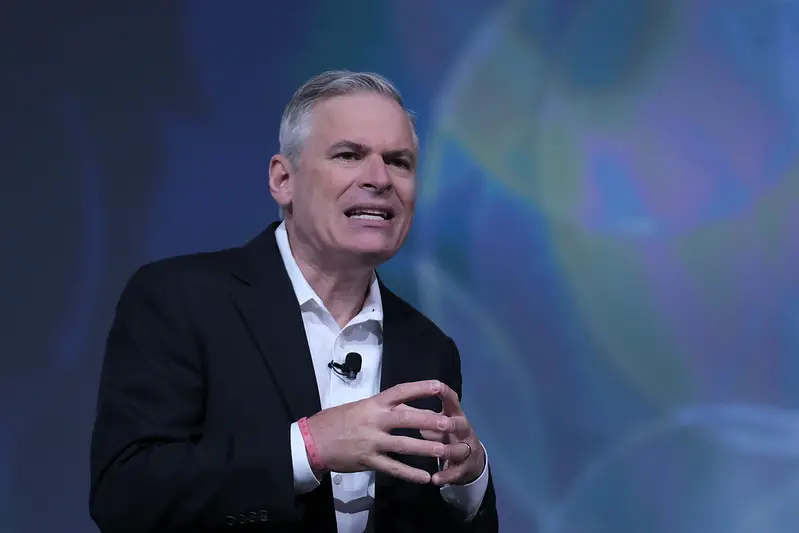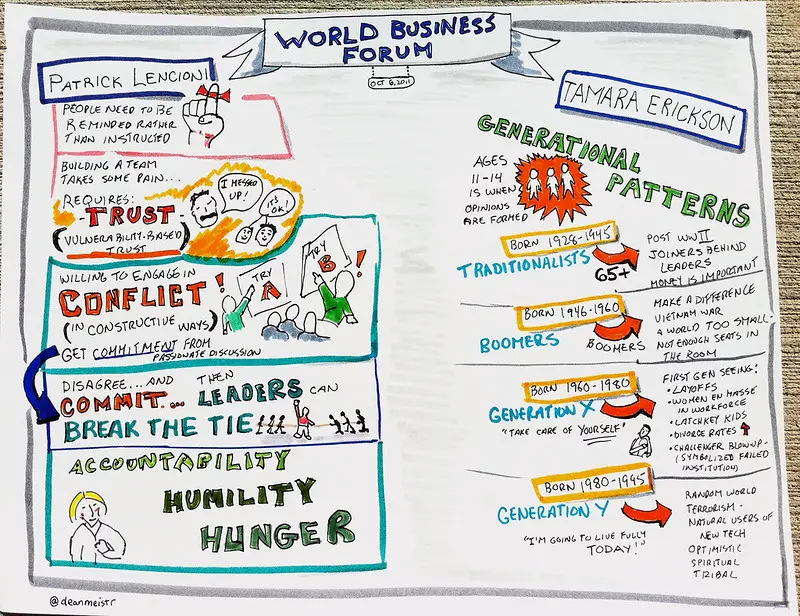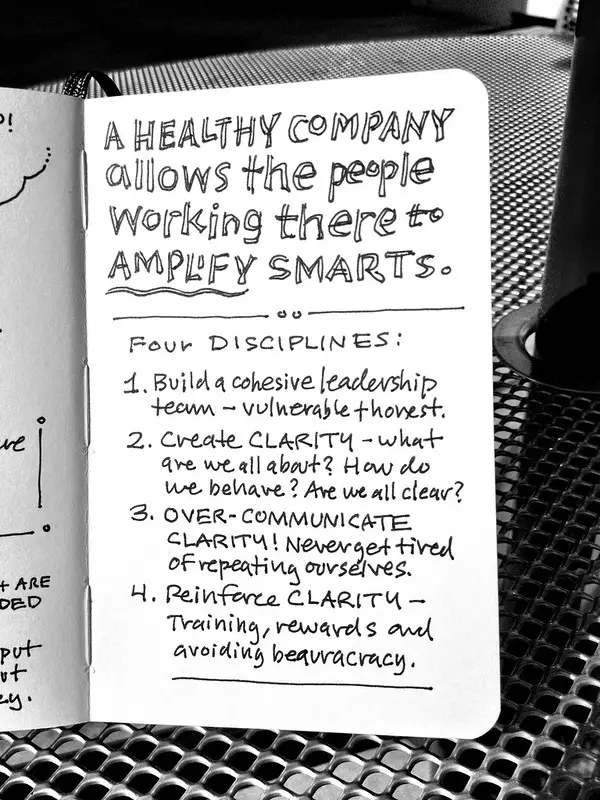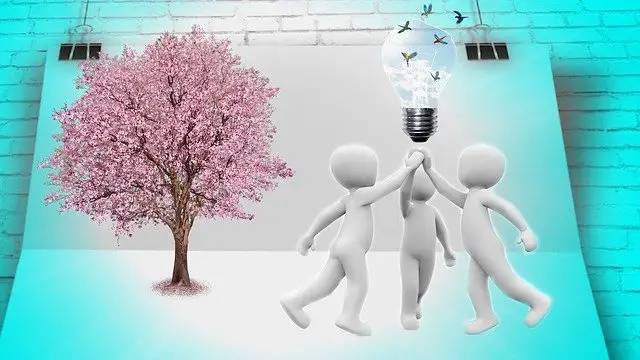Anybody that has ever worked with others to accomplish something that is significant certainly understood how vital, and yet hard, teamwork is. Certainly, great teamwork does not occur by chance; it needs rigorous and deliberate attempts. This reason is that teams are inherently dysfunctional: they consist of imperfect people that have egos and selfish aims.
Fortunately, it is very likely to attain great teamwork by making use of specific tools and principles. For any team leader, knowing how to implement them is vital.
For instance, team leaders have to form trust in the team in order for members to be comfortable engaging one another in conflict. Likewise, leaders have to create and monitor team goals in order for everybody to remain focuses. Also, it is equally essential for leaders to behave as role models, showing good teamwork themselves.

Chapter 1 – Teamwork is the key competitive edge; make teamwork your main priority.
Although it is difficult to define the precise meaning of what constitutes a team great, one obvious feature is commonly acknowledged: great teams add up to more than the sum of their individual components. For instance, this can be noticed in basketball, where a unified team of average players will usually win a more dysfunctional team of star players.
Hence, what is the reason why even the most skilled teams have a tendency to perform badly when there is teamwork?
They waste their energy and time on politics, attempting to outdo one another. This leads to low morale, less concentration on performance as well as the loss of valuable players who have had enough.
Think of the case of a Silicon Valley technology company known as DecisionTech. One time, this company was viewed as a very promising start-up; however, it’s condition worsen fast until its future seemed miserable – it was finding it hard to get customers, in spite of having a skilled (and expensive) executive team, a really talented team of engineers and lots top-tier investors than most start-ups dare imagine.

Why is that so?
The origin of the issue was an absence of teamwork within the company’s leadership. In teams that have determined and successful people, individual egos can obstruct good teamwork because people contest against their mates.
Luckily, poor teamwork can be solved. This is exactly what the new CEO of DecisionTech, Kathryn Peterson plan to do. Teamwork was her top priority even more than achieving instance financial targets, and by doing that, assisted put the company back on track.
In the following chapter, you will learn the reason why trust is the foundation of all teamwork.
Chapter 2 – Trust is the basis of all teamwork, and trust is formed when team members are open about their weaknesses and errors.
As the majority of the people understand, trust and respect are the basis of any relationship. However, they’re also the foundation of great teamwork. Why is this so?
For a team to do well, members have to trust each other. When they trust each other, they will connect in a healthy, open manner even when talking about difficult or sensitive matters. This lets them discover the best answers fast. In the absence of trust, significant topics may be evaded and left undebated, which can lead to bad choices.
A good illustration of the type of open communication that trust encourages is the departure of the head of sales at DecisionTech. Obviously, a replacement was required, and the head of customer support named Carlos Amador offered to take the position.
The remaining of the team believed that the other team members had more experience and were more appropriate for the work, and because the team had a strong basis of trust, they felt at ease talking about how they felt about this. Carlos was not offended about their decision and he accepted that the chief operations officer would be a better person for the job.

If the team wasn’t formed on trust, this matter could have led to a tricky conflict of egos, where Carlos would not have agreed to withdraw.
Therefore, how can we build trust?
Basically, team members have to freely make themselves vulnerable to each other. This is not really easy to do though, as in today’s cut-throat world people learn to be competitive and protective of what they like.
However, in order for trust to be built, everybody has to realize that there is no cause to be protective or careful in the team. This entails that team members have to make an intentional attempt to repress their basic restraint, and rather share their vulnerabilities and errors openly. By doing this, everybody will immediately be able to notice that their colleagues’ intentions toward them are good, and trust will be formed from there.
However, who should share their vulnerabilities first? Read the next chapter to know who.
Chapter 3 – The first step towards building trust is a team leader who is vulnerable and acknowledges its own errors and flaws.
The basic of teamwork is trust, which is the reason why one of the most significant duties of a team leader is to inspire their team to form trust with one another.
Trust is formed when team members openly share their weaknesses, flaws, and errors without being concerned about being vulnerable. The reason is that the team members start to know each other better when they get a broad image of their colleagues–understanding that their shortcomings make them less bothered about showing their own.
At DecisionTech, in order to trust-building, Kathryn held a session where team members talked about strengths and weaknesses. This basic exercise assisted the team to start to develop trust in one another.

However, although these kinds of exercises are helpful, the first and the key step is for the team leader to lead by example by being the first person to show the vulnerability. This shows to the team members that the setting does not reprimand vulnerability.
For instance, at DecisionTech, Kathryn talked about her weaknesses at the beginning to begin the trust-building process. She talked about the type of management errors she had done in the past and disclosed that she had once been sacked from work before.
This type of willingness the leader takes to show vulnerability inspires subordinates to take the same risks themselves.
In the next chapter, you’ll find out the reason why trust is the main component that fuels constructive conflict.
Chapter 4 – If people trust one another, they take part in constructive conflicts and make better choices.
The majority of the people see conflict as a naturally negative thing; however, as a matter of fact, constructive conflict is significant for any team to make the best likely choices.
The reason is that decision making benefits from having different, usually clashing viewpoints. Open and free debate on the qualities and errors of all ideas leads to a better result. Hence, in this sense, some conflict is useful; however, it has to be constructive in nature –this means that everybody should concentrate on the matter at hand, instead of their personal plan or intra-team politics.
If a team doesn’t have trust, this usually entails that they will want to evade any kind and all conflict; therefore, they avoid talking about controversial subjects. They refrain their views and candid concerns, preferring not to challenge each other since they are attempting to uphold some type of pseudo-harmony in the team.
For instance, when Kathryn first got to DecisionTech, she discovered that there was barely any debate during the leadership team’s meetings. The reason is that they didn’t really trust each other enough to talk about tough yet important issues.
Therefore, if constructive conflict is vital for making the best choices, and trust is vital for conflict, it now obvious that a team needs to develop trust if they want to discover the best possible answers to any difficulties.

Forming trust allows conflict since team members that trust one another will be very comfortable even when having a passionate and sensitive debate over a tricky manner since they understand that nothing they say will be read as damaging.
In order to encourage healthy debate at DecisionTech, Kathryn fostered trust with team-building efforts. Finally, team members formed such a great relationship with one other that they began taking part in healthy debates, also about previously controversial subjects. Trust incited debates as well as constructive conflict, which eventually made this team become healthier and more effective at making the right choices.
However, what if no agreement is reached? As you’ll get to know soon, this may not look as bad as it seems.
Chapter 5 – Everyone has to be committed to a choice, even if there is no consensus or reality about its accuracy.
The majority of the people have, at a point in their lives, been unlucky enough to be in a meeting where choices have been made, just for people to keep second-guessing the choices so that nothing really gets accomplished.
One of the main characters of great teams is that they are able to make choices and then support them. The reason is that they understand that any choice is better than no choice at all, particularly when we talk about the significant ones.
They commit to the choices they make since they understand that not having commitment leads to ambiguity. In the leadership team of a company, this leads to misaligned aims and priorities, and these misalignments get even more severe as they go down to the worker level.
In a great team, choices are made in order for everybody to buy into them.
How can one accomplish this?
It is really hard to discover consensus in any team setting, as various views and ideas will usually prevail. Forcing a consensus in that kind of setting would entail looking for an answer that everyone is pleased with, and this is hardly productive.

Rather, what consensus means to great teams is that everybody is committed and knows the greater aim, even if the decision they agreed on is not one they chose.
In order to get there, great teams make sure everybody has an opportunity to share their view. This allows everybody to feel that they have been heard, and usually, this is already sufficient. The majority of sensible people do not insist on their choice constantly prevailing; however, are contented when their contribution has been recognized and talked about.
When everybody’s opinions are given candid consideration; then, the team is more willing to support the team choices. This is the reason why in great teams you’ll usually see people totally committing to the group’s choices, even if they had debated passionately against that actual choice previously.
Chapter 6 – There is peer-to-peer accountability in great teams which means everybody’s performance is obvious.
One of the most uncomfortable instants thinkable in any team happens when you need to call out a colleague that he or she is performing below standard or not acting appropriately. This is awkward since the majority of the people feel as though they are sticking their nose into another person’s issue, or artificially placing themselves higher than their alleged colleague.
Unluckily, if members of a team do not point out to one other in such situations, it will make everybody feel less responsible, which will then lead to missed deadlines, poor outcomes, and bad team performance. Then, the team leader is burdened with being the only source of discipline in the team, since there is an absence of peer-to-peer accountability.
At DecisionTech for instance, when one of the workers failed to meet the deadline for him competitor analysis, Kathryn reminded the remaining team members that they should have talked about the problem before. It was clear that the analysis would not be completed before the deadline, and the remaining team members should have challenged the person in charge to encourage him to do it.
In some teams, when members have formed a good relationship, then, they are hesitant to hold each other responsible, since they are scared that their helpful personal relationships will be at risk. Ironically, this hesitancy can and will ruin those personal relationships, since the team members will start to hate one another for not living up to expectations and for slipping from the team’s performance standards.

But, great team members actually hold each other responsible and this really enhances their relationships, since they form respect for one another for sticking to the same high standards. When there is the presence of trust in a team, the members who are driven to do well will know that they are doing that for the common good, and hence they won’t take it personally.
Eventually, peer pressure is really the most efficient and effective way of keeping high standards of performance. People who are scared to disappoint the teammates they admire will certainly feel the urge to work hard and enhance their performance.
This is the reason why peer-to-peer accountability is a significant factor in improving team performance.
Chapter 7 – Effective teams concentrate on shared outcomes instead of personal goals.
All teams possess goals that they work towards, outcomes they want to accomplish –it could be to make a new product line or win in a game of basketball. This is the case for the majority of the individuals too; however, in great teams, team members know that shared goals have to take superiority over individual ones.
Think of Kathryn’s husband as an illustration. Katharyn’s husband is a basketball coach, who had to drop one of his most skilled players. Why did he do that? This particular player did not bother if the team won or lost; the only thing he cared about was the number points he scored. In a word, he cared more about his personal goals than team goals, and hence he had to go.
If people such as this stay on a team, the team will be unable to recall its shared goals and quickly lose its competitive advantage. Members begin to concentrate on their own careers, hence, progress deteriorates. Ultimately, the best team members who were ready to work for the shared goal come to understand that the team isn’t a good team for them; hence, they leave to become part of a better team. This worsens the matter more.

Therefore, what type of shared goals keeps the team concentrated? Clearly defined goals that are so simple to measure.
If the expected outcomes are clear and leave no space for understanding, then it’s impossible for anybody to avoid working on the team goal and work on their own personal goals.
For instance, at DecisionTech the clear and measurable goal of getting 18 clients at the end of the year was set, and everybody united behind the goal.
When shared goals are accepted, individual team members are ready to assist and support one another even across lines of duties.
At DecisionTech, this signified that the engineering unit was ready to gather its resources to assist the sales department with its product demos. By doing this, this was the best method they could assist to gain more clients and meet the shared goal.
Chapter 8 – Great teams spend much time with each other, which leads to them saving lots of time.
Much as a rowing boat will head nowhere if all oarsmen rows in a different way, a team will head nowhere if they don’t decide on where they are heading to.
Therefore, what can be done to fix this kind of ambiguity or indecision?
The main thing is for teams to meet constantly, as a lot of advantages can be gained from this.
First of all, it assists members to form good relationships and trust, which already assists them to solve any problems fast and effectively.
Secondly, conflicts are very easy to solve head-on, and it is far more easy to gather arguments and counterarguments from every team member in real-time when all of them are in the same place.
Thirdly, in head-on meetings, team members have a clearer understanding of what every one of them is doing and how their abilities might be leveraged in other aspects too; hence, there is less risk of excessive work.

For instance, at DecisionTech, a lot of the team’s incompetence was solved by Kathryn “forcing” team members to spend substantial time with each other. Nearly eight days per fiscal quarter was used in meetings such as the yearly meeting, the quarterly off-site meetings, the staff meetings that were done every week, and ad hoc topical meetings.
When a team has formed a good bond, they are in a better place to work in sync. For instance, overlapping work is evaded when every team members understand what the other people are doing. Likewise, resources are distributed cleverly, since team members instantly notice where their abilities and understanding could be used to assist one another.
Therefore, to sum everything up, constant meetings and touchpoints assist great teams to be organized and efficient which saves lots of time, even if a lot of time has to be put in initially.
The Five Dysfunctions of a Team: A Leadership Fable by Patrick Lencioni Book Review
Great teamwork is a strong competitive edge; however, it is actually uncommon since organizations have a tough time evading the regular dysfunctions that teams experience. The basis for great teamwork is developing trust, taking part in constructive conflict, committing to choices, holding peers responsible and concentrating on shared goals.
Lead by example
Say you are a leader of a team and you want to form trust by inspiring other people to talk about their vulnerabilities, you have to do that first yourself. One good method to do this is to talk about some of your personal stories, and then tell others to do the same. Also, you can make use of personality tests such as the Myers-Briggs Type Indicator test to encourage discussion about the type of people team members are in order for better understanding to be achieved.
Create clear goals and abide by them
Anytime you see yourself in a team, maybe leading the team or basically participating in the team, insist on creating shared goals and quality standards. Furthermore, as that they be adhered to with basic and constant progress reviews. This will help make everybody concentrated on team goals, and foster accountability as well. Also, remember that: shared goals need shared rewards, such as a team event.
